Post by victor on May 2, 2010 11:22:18 GMT 8
--Would Batteryboy have some input on this?-- 
I'm thinking about checking out Layac junction on my next trip to the Philippines. With the very limited time I'll have, Layac would be the closest, most accessible, Bataan battlefield I haven't been to yet (on the way to Morong). I thought it would be nice to hike the place, take pictures, and figure out the general area where Joe Calugas' dad earned his Medal of Honor (88th FA PS).
There's very little research material to work with.
Starting with the maps and defensive dispositions.
(click for bigger)
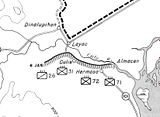
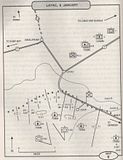

They're probably not exactly to scale and originally based on recollection of commanders after the war, but the 88th FA location should not be far and in the general vicinity of where it was drawn on the maps.
Comparing with the satellite image, my rough estimate would be around where I drew the red circle.
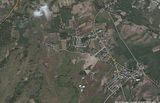
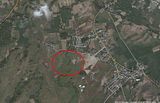
The value added information I have is Felipe Fernandez's recollection that the artillery battery that Jose Calugas put back into action was at the foot of a hill. The 88th FA would have been the closest field artillery unit to the right of 26th Cavalry. It's hard to see which are hills in the overhead picture but the clump of uncleared trees/vegetation could indicate that they're elevated hills.

According to this 31st Infantry study/review... the 23rd and the 88th were dug in on higher ridges to the rear. So they could be on the lower foot ridges of the Mt. Natib range.
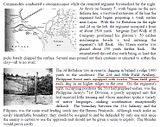
Here's a little topographical version of the google map.
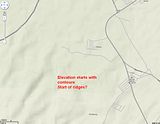
Can't really tell much more without ground level photos. There looks like a residential area where the 31st Infantry would have been.
Here's an excerpt from this website, which in turn is just an excerpt from Bataan, Our Last Ditch.
www.historynet.com/battle-of-bataan-brigadier-general-clyde-a-selleck-commands-the-layac-line.htm
Equally relentlessly, the Japanese concentrated their fire on the Scout 23rd Artillery. These guns were in defilade behind a hill, but Japanese planes spotted them. When the first shells exploded nearby, Lieutenant Miller, having come on active duty only seven days earlier, was shocked. 'Those sons of pregnant doges are trying to kill us!' he exclaimed. One shell burst directly on a Scout emplacement, put the gun out of action and severely wounded four gunners. The Scout soldiers knew their jobs, were intensely loyal and obeyed orders from their American officers without question. Despite the severe losses and the alarming sight of a lone American infantryman in full flight, the Scouts steadfastly serviced their guns.
Miller remembered the American deserter 'falling flat on the ground and crying out 'the Japs are coming.' He was in a pure funk. We barely had time to look at him but told him to get out of our way, and he ran off to the rear.' Nearby, American medics treated the wounded Scout artillerymen and watched enemy fire fall around the Scouts. 'They were exchanging shell for shell with the Japanese,' remembered John G. Lally, then an 18-year-old Kansan medic. 'It was the bravest thing I ever saw.'
Because the 1st Battalion, 88th Artillery, was shooting from more protective terrain than the 23rd, it did not suffer as badly. Even so, the ammunition train was hit, several prime movers were disabled, and personnel losses were heavy. Japanese fire drove the crew of an A Battery gun to cover, dragging their wounded with them. Jose Calugas, a mess sergeant from another battery, ran across shell-swept ground to the idle piece, organized a pick-up crew and put the gun back into action despite continued enemy shelling.
I found a picture I took last year which I believe was at that Layac curve of the main national road as it turned south into Bataan. I see a faint outline of a ridge in the distance (not the mountain). It could be the FA position or it could be too far away even be it. (shrug) Just have to go there and take a look.
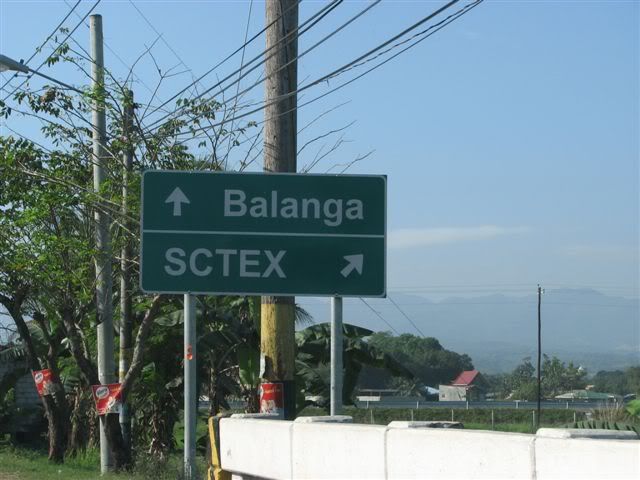

I'm thinking about checking out Layac junction on my next trip to the Philippines. With the very limited time I'll have, Layac would be the closest, most accessible, Bataan battlefield I haven't been to yet (on the way to Morong). I thought it would be nice to hike the place, take pictures, and figure out the general area where Joe Calugas' dad earned his Medal of Honor (88th FA PS).
There's very little research material to work with.
Starting with the maps and defensive dispositions.
(click for bigger)



They're probably not exactly to scale and originally based on recollection of commanders after the war, but the 88th FA location should not be far and in the general vicinity of where it was drawn on the maps.
Comparing with the satellite image, my rough estimate would be around where I drew the red circle.


The value added information I have is Felipe Fernandez's recollection that the artillery battery that Jose Calugas put back into action was at the foot of a hill. The 88th FA would have been the closest field artillery unit to the right of 26th Cavalry. It's hard to see which are hills in the overhead picture but the clump of uncleared trees/vegetation could indicate that they're elevated hills.

According to this 31st Infantry study/review... the 23rd and the 88th were dug in on higher ridges to the rear. So they could be on the lower foot ridges of the Mt. Natib range.

Here's a little topographical version of the google map.

Can't really tell much more without ground level photos. There looks like a residential area where the 31st Infantry would have been.
Here's an excerpt from this website, which in turn is just an excerpt from Bataan, Our Last Ditch.
www.historynet.com/battle-of-bataan-brigadier-general-clyde-a-selleck-commands-the-layac-line.htm
Equally relentlessly, the Japanese concentrated their fire on the Scout 23rd Artillery. These guns were in defilade behind a hill, but Japanese planes spotted them. When the first shells exploded nearby, Lieutenant Miller, having come on active duty only seven days earlier, was shocked. 'Those sons of pregnant doges are trying to kill us!' he exclaimed. One shell burst directly on a Scout emplacement, put the gun out of action and severely wounded four gunners. The Scout soldiers knew their jobs, were intensely loyal and obeyed orders from their American officers without question. Despite the severe losses and the alarming sight of a lone American infantryman in full flight, the Scouts steadfastly serviced their guns.
Miller remembered the American deserter 'falling flat on the ground and crying out 'the Japs are coming.' He was in a pure funk. We barely had time to look at him but told him to get out of our way, and he ran off to the rear.' Nearby, American medics treated the wounded Scout artillerymen and watched enemy fire fall around the Scouts. 'They were exchanging shell for shell with the Japanese,' remembered John G. Lally, then an 18-year-old Kansan medic. 'It was the bravest thing I ever saw.'
Because the 1st Battalion, 88th Artillery, was shooting from more protective terrain than the 23rd, it did not suffer as badly. Even so, the ammunition train was hit, several prime movers were disabled, and personnel losses were heavy. Japanese fire drove the crew of an A Battery gun to cover, dragging their wounded with them. Jose Calugas, a mess sergeant from another battery, ran across shell-swept ground to the idle piece, organized a pick-up crew and put the gun back into action despite continued enemy shelling.
I found a picture I took last year which I believe was at that Layac curve of the main national road as it turned south into Bataan. I see a faint outline of a ridge in the distance (not the mountain). It could be the FA position or it could be too far away even be it. (shrug) Just have to go there and take a look.







